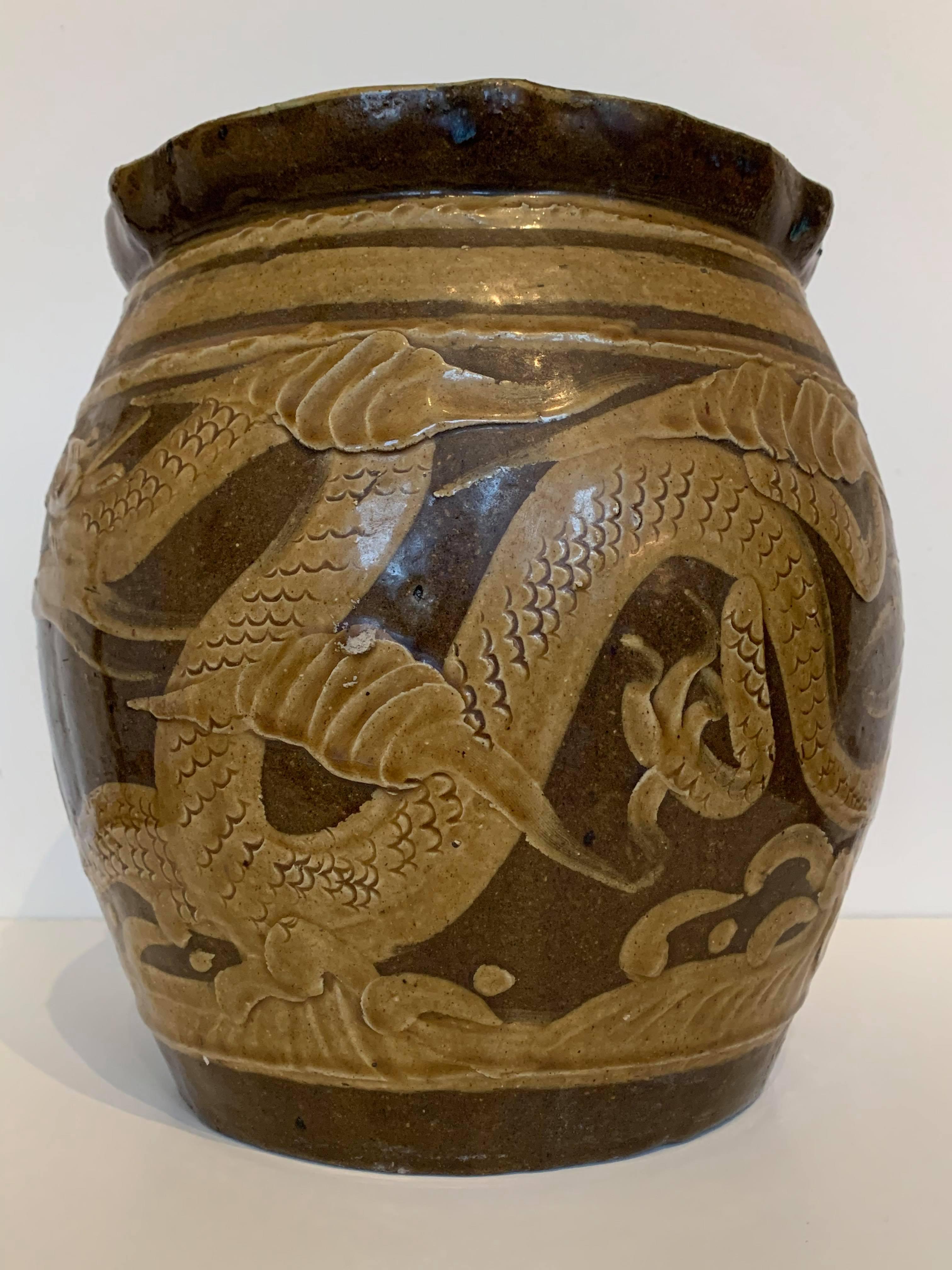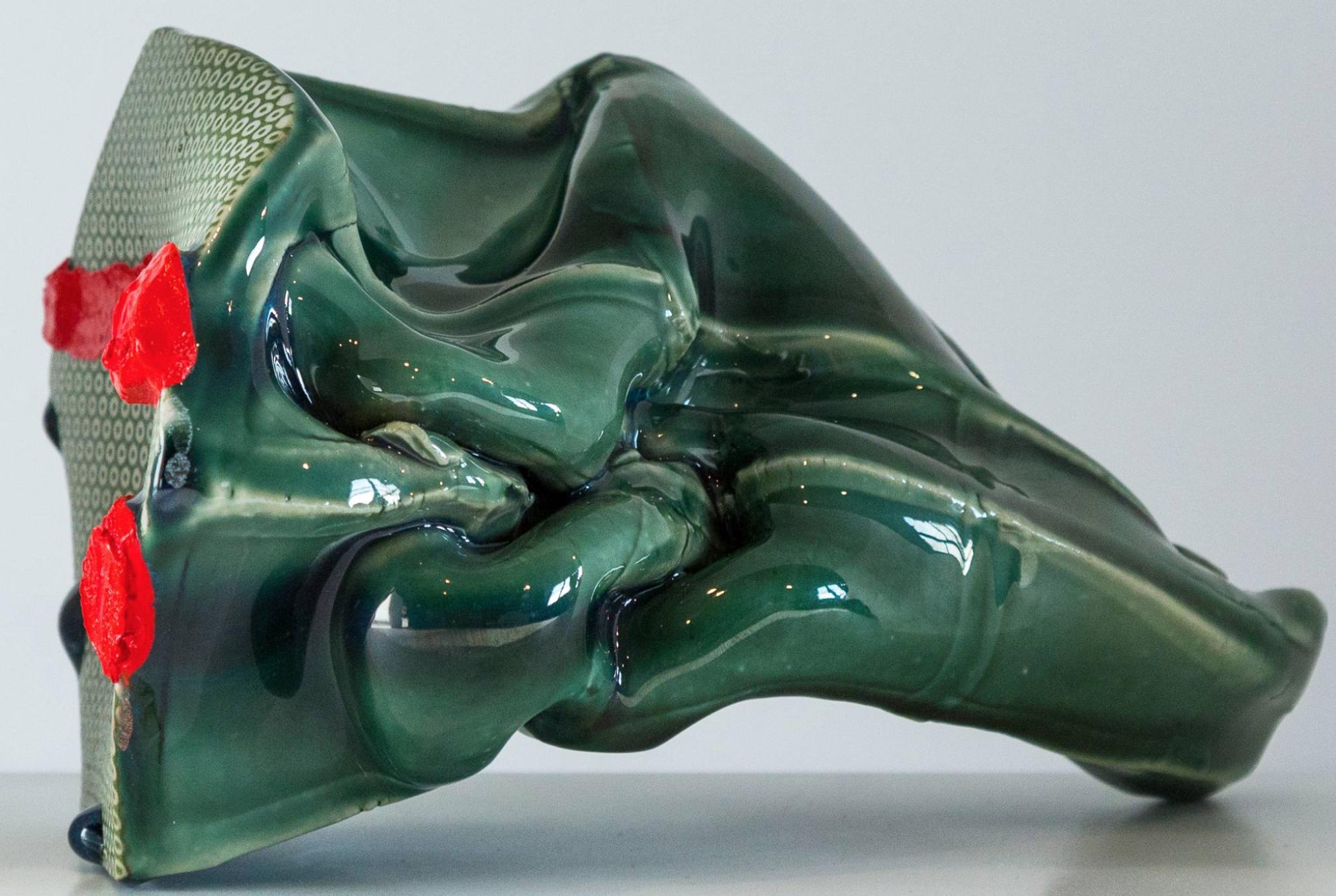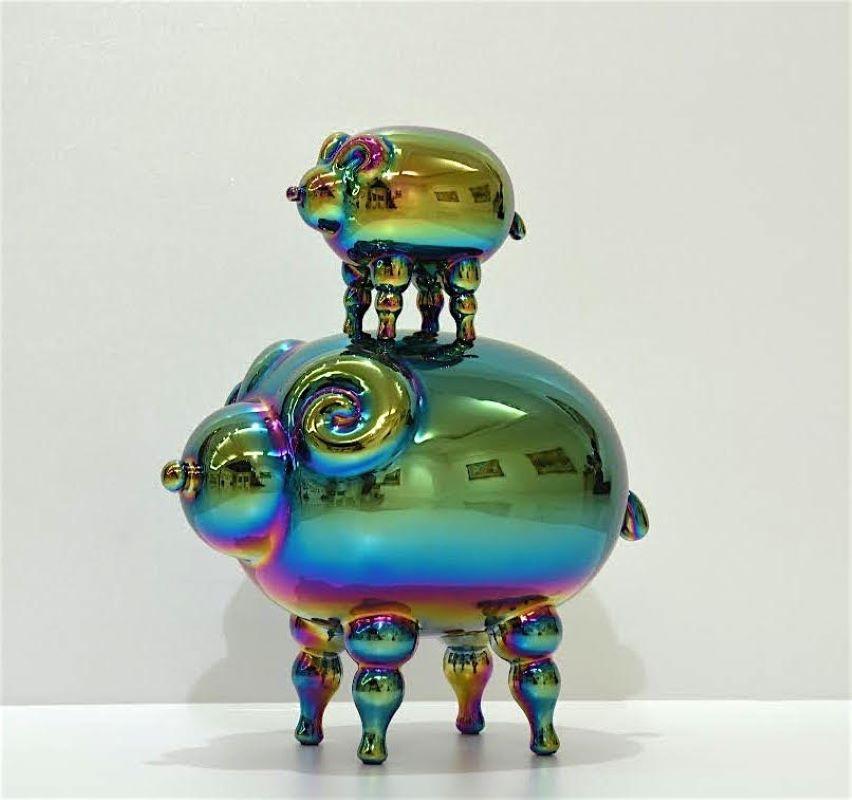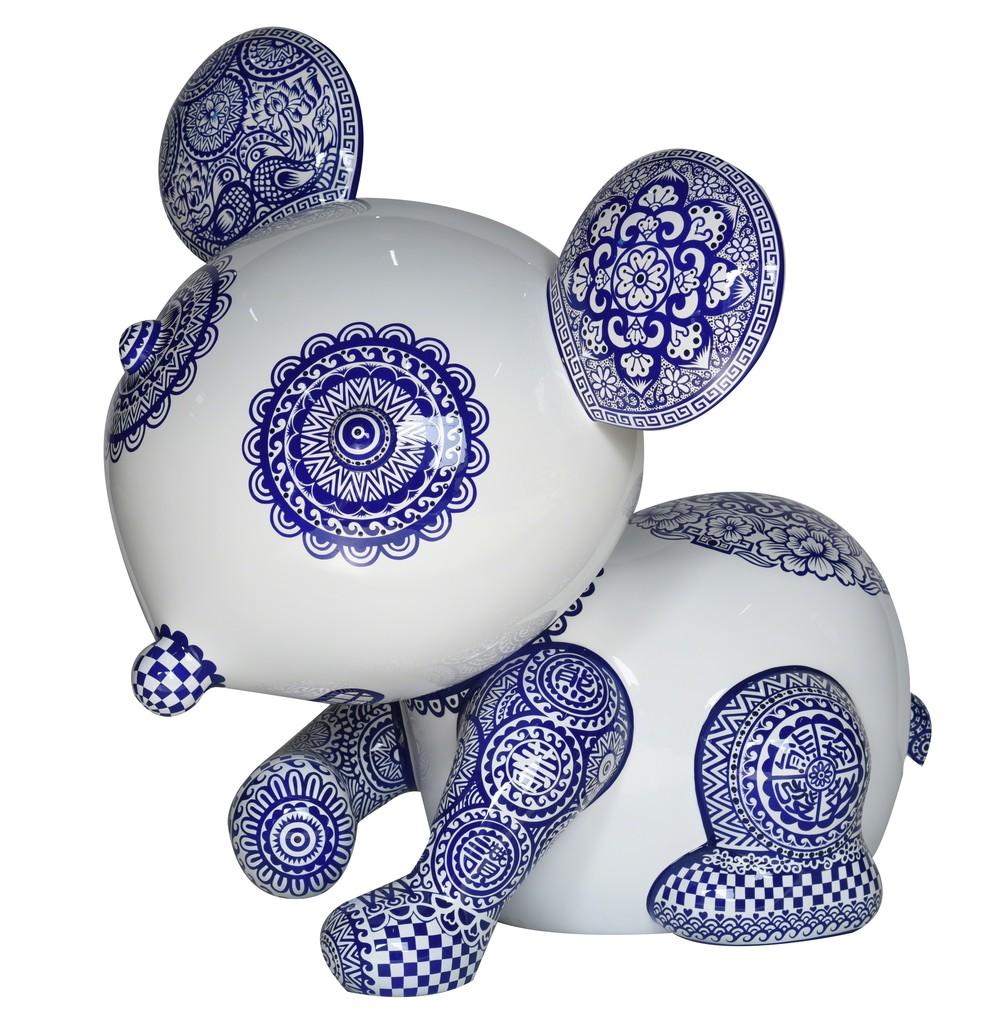Items Similar to A Pair of Chinese Blue and White Table Lamps "Phoenix Tail" or "Yen Yen" Vases
Want more images or videos?
Request additional images or videos from the seller
1 of 9
UnknownA Pair of Chinese Blue and White Table Lamps "Phoenix Tail" or "Yen Yen" VasesLate 19th century
Late 19th century
About the Item
Chinese Blue and White Table Lamps "Phoenix Tail" or "Yen Yen" Vases With "Double Happiness" Characters with sweet pea designs
Late 19th/early 20th century
35 1/2 inches with harps
Painted in a striking cobalt blue against a white ground, these Yen Yen or Fengwei Zun style vases feature the Double Happiness symbols. Double Happiness sometimes translated as Double Happy, is a Chinese traditional ornament design, commonly used as a decoration symbol of marriage. Double Happiness is a large Chinese character which is comprised of two connected copies of the character for happiness.
The double happiness symbol dates back to the Tang Dynasty. According to legend, there was a student on his way to the capital to take an examination, after which the top scorers would be selected as ministers of the court. Unfortunately, the student fell ill along the way as he passed through a mountain village. But thankfully, an herbalist and his daughter took him to their house and expertly treated him.
The student recovered quickly because of their good care. However, when the time came for him to leave, he found it hard to say goodbye to the herbalist's daughter, and so did she—they had fallen in love with each other.
The young man ended up scoring highest in the examination. The emperor recognized his intellect and appointed the young man as a minister of the court. Before beginning the position, however, the student was allowed to pay a visit to his hometown.
He ran back to the herbalist's daughter and they soon wed, and during the ceremony, they doubled the Chinese character for "happy" on a red piece of paper and placed it on the wall. It is also common for people to gift the symbol to a couple to bestow upon them a blessing of good luck for their marriage.
In all of these contexts, the Double Happiness symbol represents joy and unity and is a commonly seen Feng Shui enhancer for love, romance and luck for the married couple.
- Creation Year:Late 19th century
- Dimensions:Height: 35.5 in (90.17 cm)Width: 9 in (22.86 cm)Depth: 9 in (22.86 cm)
- Medium:
- Movement & Style:
- Period:
- Condition:This pair of Chinese Blue and White vases are in very good condition. As antiques, there are small nicks and fritz to the rims of the vases with one small piece missing from the, carved wood stands. Unlike most examples, the painting is very crisp.
- Gallery Location:SANTA FE, NM
- Reference Number:1stDibs: LU140826916342
About the Seller
5.0
Platinum Seller
These expertly vetted sellers are 1stDibs' most experienced sellers and are rated highest by our customers.
Established in 1995
1stDibs seller since 2020
89 sales on 1stDibs
Typical response time: 1 hour
- ShippingRetrieving quote...Ships From: Santa Fe, NM
- Return PolicyA return for this item may be initiated within 2 days of delivery.
More From This SellerView All
- Pair of Antique Hand Painted Chinese Jars With Foo Dogs and InscriptionsLocated in SANTA FE, NMPair of Antique Hand Painted Chinese Vases with Foo Dogs and Inscriptions China, early 20th century Porcelain 17 x 8 x 8 inches Painted in iron red, these Foo Dogs or Imperial Guardian Lions are strong Feng Shui protection symbols which were traditionally placed in front of Imperial palaces, temples, and government offices. They were also a traditional symbol of family wealth and social status and were placed in front of wealthy homes. It is widely accepted that foo dogs were created sometime after real lions...Category
Early 20th Century Qing More Art
MaterialsPorcelain, Paint
- Pair of English Porcelain Vases with Insects from John Mortlock circa 1875Located in SANTA FE, NMPair of Vases with Parcel Gilt Insects England, John Mortlock circa 1875 Porcelain with gold leaf 15 inches The firm of Mortlock began business in 174...Category
1870s Victorian More Art
MaterialsGold, Enamel
- Fine & Very Large Belle Epoque Porcelain and Enamel Elephant, France circa 1900Located in SANTA FE, NMVery Large Porcelain Elephant France, circa 1900 Porcelain, enamels 28 x 14 1/2 x 9 inchesCategory
Early 1900s Art Nouveau Figurative Sculptures
MaterialsGold, Enamel
- Antique Portrait of 6 Dogs on Porcelain by Maison Pichenot-Loebnitz ca. 1870sLocated in SANTA FE, NMAntique and exceptionally rare and fine Portrait of 6 Dogs on Enameled Ceramic Maison Pichenot-Loebnitz France, ca. 1870. 25 x 8 (31 x 13 framed) inches This rectangular panel made of enameled ceramic was made by Jules Loebnitz in the second half of the 19th century depicts a suite of 6 very fine canines in a landscape setting. The Pichenot-Loebnitz factory was founded by Mr Pichenot, grandfather of Jules Loebnitz, in 1833. From 1841, Mr Pichenot created a new, innovative method of uncrackable earthenware panels for architectural mantels, winning a medal at the Exhibition of 1844. In 1857, Jules Loebnitz, an artist as much as an industrialist, became director of the factory. For his first major job, Loebnitz passionately collaborated with architect Félix Duban on the restoration of the Blois Castle, recreating the antique tiles of the mantelpieces. He then went to work with the most prominent architects of his times; Eugène Viollet-le-Duc, Laval, Charles Garnier, Just Lisch and Paul Sédille. A friendship was born in 1867 between Paul Sédille, the architect of the Printemps department stores and the Basilica of Bois-Chenu in Domrémy-la-Pucelle, and Jules Loebnitz that would lead to a tight, long-lasting professional, artistic, and intellectual collaboration. This was an important meeting between the theorist of polychrome architecture and the man who had pushed French ceramic art considerably forward, allowing for large, enameled earthenware plates decorated with very bright and long-lasting glass-like colors. Many architectural projects were born from the collaboration of Sédille and Loebnitz: World’s fair pavilions, apartment buildings, villas, hotels, and monuments. During the Great Exhibition of 1878, Paul Sédille created the door of the Palais des Beaux-arts, while Jules Loebnitz was in charge of the ceramic decoration of the facade. A reporter covering the 1878 World’s fair described the monumental door...Category
1870s French School Animal Paintings
MaterialsEnamel
- Antique Porcelain Dog Portrait Cavalier King Charles-Edmé Samson circa 1860Located in SANTA FE, NMAntique Porcelain Dog Portrait: Cavalier King Charles-Edmé Samson According to the model created by Johann Joachim Kaendler (MEISSEN around 1770). By the famous factory of Edmé Sams...Category
Mid-19th Century Rococo Figurative Sculptures
MaterialsPorcelain
- Pair of Japanese Buddhist, Meiji Period Foo-Dogs from the Satsuma Kilns, 19th C.Located in SANTA FE, NMPair of Buddhist Foo Dogs Polychrome porcelain Japan, Meiji era (1868 – 1912), circa late 19th century Satsuma Kilns 12 3/8 x 9 5/8 inches This exquisite pair of Japanese Foo-dogs ...Category
Late 19th Century Other Art Style Figurative Sculptures
MaterialsPorcelain
You May Also Like
- Large Blanc de Chine Figure Of GuanyinLocated in Delray Beach, FLLarge 35" tall, fine detail porcelain Dehua Blanc de Chine figure of Kwan Yin, early 20th Century. The goddess is clothed in a voluminous flowing robe which is open at the chest to r...Category
1920s Qing Figurative Sculptures
MaterialsPorcelain
- 19th Century Chinese Dragon Glazed Ceramic PlanterLocated in Troy, NYThis 19th century Chinese jardiniere features dragons in different shades of glazed earth tones and a turquoise glaze on the inside. It has good balance and a pleasing silhouette; it...Category
19th Century Qing More Art
MaterialsCeramic, Glaze
- "JAMÓN JAMÓN I (Reliquary Generalife)", ceramic sculpture, porcelain vessel, urnBy Andrew Cornell RobinsonLocated in Toronto, Ontario"JAMÓN JAMÓN I (Reliquary Generalife)", 2019, sold in the frame shown, is one in a series of ceramic sculptures by artist Andrew Cornell Robinson...Category
21st Century and Contemporary Contemporary Abstract Sculptures
MaterialsEnamel
- SheepLocated in New York, NYHung Yi was born in Taichung, Taiwan in 1970. The artist’s works are inspired by Taiwanese culture or day-to-day life in Taiwan. In the 1990s, it was popular among artists in Taiw...Category
2010s Contemporary Abstract Sculptures
MaterialsEnamel, Steel, Stainless Steel
- Panda Uan ZaiLocated in New York, NYa sculpture by Hing YiCategory
2010s Contemporary Abstract Sculptures
MaterialsEnamel, Steel, Stainless Steel
- PuppyBy Jeff KoonsLocated in Toronto, OntarioWe’re big fans of Jeff Koon’s famously optimistic, kitschy and celebratory approach to contemporary pop art. We’ve offered a number of Koon’s humorous and playful works before, and...Category
1990s Contemporary Sculptures
MaterialsEnamel
Recently Viewed
View AllMore Ways To Browse
Used White Table
White Antique Table
Antique White Tables
Antique White Table
Antique China Blue And White
Antique Chinese Blue And White
Antique Red White Blue
Antique Art Gift
Married Couple
Antique White Table Lamps
Antique White Table Lamp
White Tail
Gift For A Man
Blue Phoenix
Phoenix Antique
Chinese Phoenix
Phoenix China
Chinese Blue And White Table




